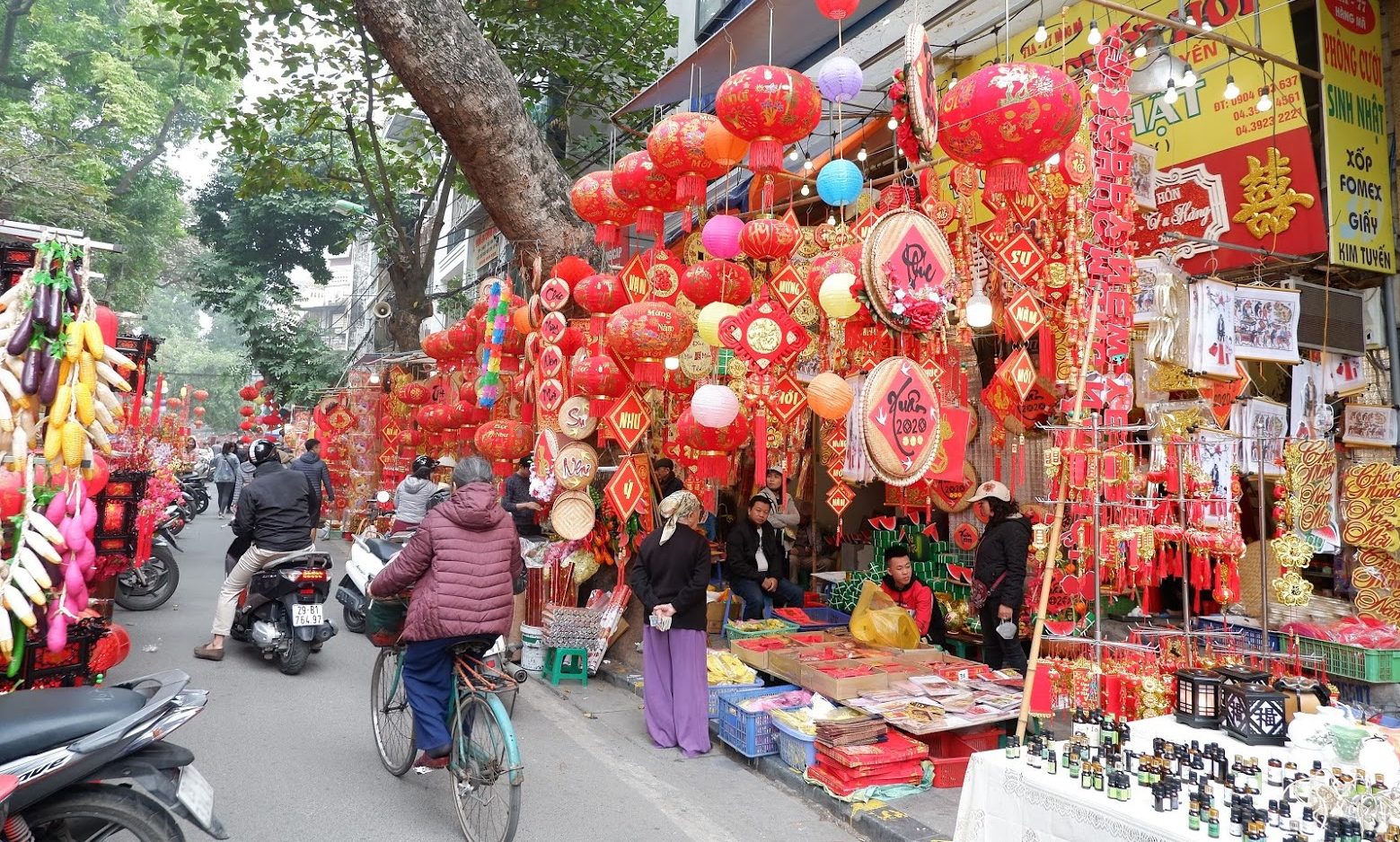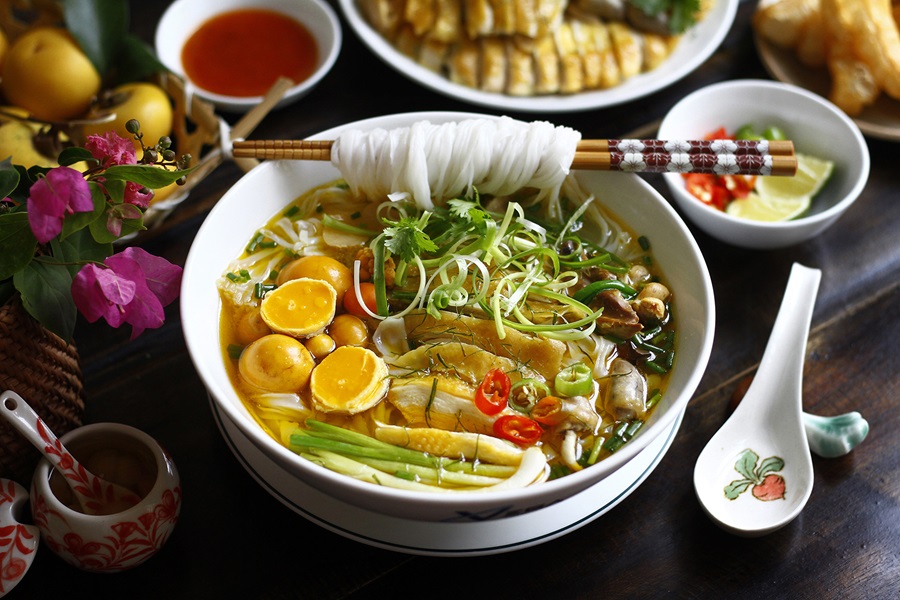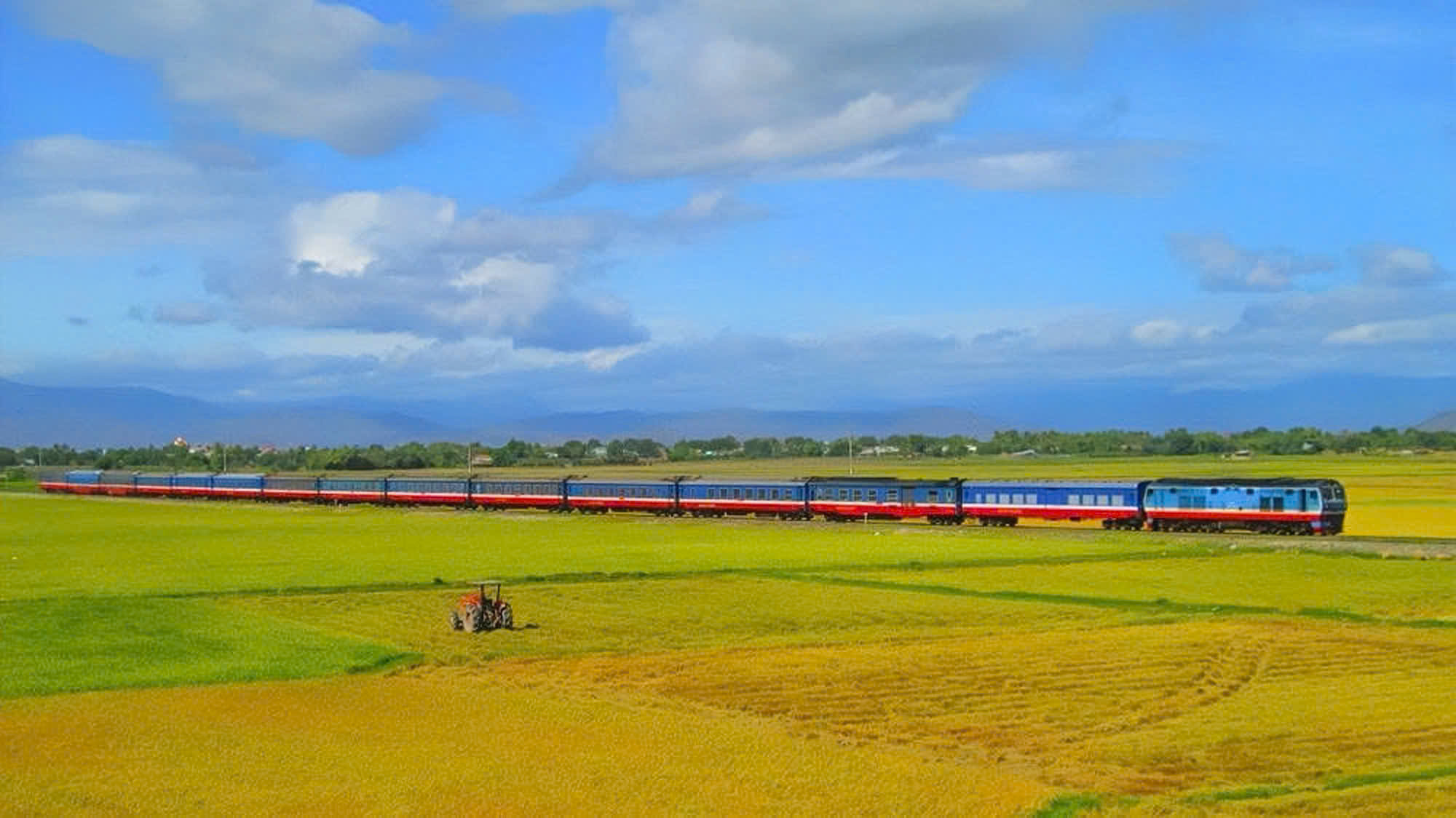MỤC LỤC NỘI DUNG
Tết, or Vietnamese Lunar New Year, is not just the biggest holiday of the year — it’s a full sensory and emotional experience. As a local, I’ve seen firsthand how everything from the food to the family rituals reflects deep-rooted values of togetherness, respect, and new beginnings. And if you’re visiting Vietnam during this magical time, prepare to be amazed — and maybe a little surprised.
PHM Travel is proud to accompany you on a cultural journey through Vietnam during Tết. From the lantern-lit streets of Hanoi’s Old Quarter to the bustling countryside markets filled with traditional treats and festive energy, we don’t just offer tours — we help you live the spirit of Lunar New Year in its most authentic form.
What Is Lunar New Year in Vietnam?
Lunar New Year in Vietnam, known as Tết Nguyên Đán, marks the arrival of spring and a fresh start on the lunar calendar — usually falling between late January and mid-February. The word “Tết” comes from Sino-Vietnamese and simply means “festival.”
But Tết is so much more than a date. It’s when we:
-
Honor our ancestors,
-
Cleanse away bad energy,
-
Gather with family,
-
And hope for a better year ahead.
The celebration lasts up to 7 days, and trust me — the whole country slows down.

Is It the Same as Chinese New Year?
Not quite.
While there are similarities — red envelopes, family gatherings, symbolic foods — Vietnam has its own distinct customs and flavor.
We have:
-
Bánh Chưng and Bánh Tét, not dumplings.
-
Peach blossoms or apricot flowers, instead of red lanterns.
-
And xông đất – a unique tradition where the first visitor of the year determines your luck.
In fact, Vietnamese New Year customs predate Chinese influence, and legends like “Bánh Chưng, Bánh Dày” come from the Hùng Kings era — long before Chinese dynasties ruled.

Bánh chưng is a square-shaped sticky rice cake filled with pork and mung beans, wrapped in green leaves
Pre-Tết: The Busiest Days of the Year
Cleaning and Decorating
We believe you need to sweep away the old (literally and spiritually) before a new year. Homes are deep-cleaned, rearranged, and decorated with:
-
Red and gold banners,
-
Kumquat trees, peach or apricot blossoms,
-
And ancestral altars full of offerings.

Shopping at Tet Markets
These markets aren’t just for buying food — they’re cultural experiences full of color, smells, chatter, and excitement. You’ll see:
-
Piles of sticky rice cakes,
-
Heaps of pomelos and tangerines,
-
Families debating over the “luckiest-looking” kumquat tree.
Offerings to Ancestors
This is the heart of Tết: remembering those who came before us. We offer fruits, flowers, cakes, and incense at home altars or visit graves. It’s not about mourning — it’s about inviting them to celebrate with us.
Unique Vietnamese Traditions During Tết
Lì xì (Red Envelopes)
Given mostly to children and elders, these red envelopes carry small amounts of money and wishes of health and prosperity. It’s not the cash that matters — it’s the gesture.

Xông đất: The First Visitor
The first person to step into your home after midnight sets the tone for your year. We often invite someone with “good fortune energy” — kind, successful, lucky — to be our “first-footer.”
Family Reunions & Meals
If you think holiday dinners in the West are intense — try Tết!
Families gather from near and far, cooking together and sharing dishes like:
-
Bánh Chưng (North) – square sticky rice cake symbolizing the Earth
-
Bánh Tét (Central & South) – round sticky rice cake symbolizing the sky
-
Gà Luộc (Boiled Chicken) – Often served whole with herbs and dipping sauce, symbolizing purity, success, and respect when placed on ancestral altars.
-
Thịt Kho Tàu – Braised pork belly with boiled eggs in caramelized coconut juice. A Southern favorite, this dish symbolizes warmth, prosperity, and family reunion.
-
Canh Khổ Qua – Bitter melon soup stuffed with minced pork. People eat this to “swallow the bitterness” of the past year and wish for better things ahead.

Wait… Everything Is Closed?
Yes. That’s the part most visitors don’t expect.
On the first few days of Tết:
-
Shops, markets, salons, even pharmacies may be closed.
-
Public transport runs limited schedules.
-
Cities go strangely quiet.
I once forgot to get a haircut before Tết — big mistake. The whole street was shuttered. I saw a tourist wandering, looking for food. Lucky for him, my mom had cooked for an army. He joined us, had bánh chưng and tea, and left with a red envelope. That’s Tết — spontaneous, generous, unforgettable.
Tips for Travelers During Tết
-
Book early – Hotels, trains, and buses fill up fast.
-
Stock up – Don’t count on 24/7 stores those first few days.
-
Enjoy the quiet – This is your chance to see Vietnam without traffic chaos.
-
Be open – You might get invited to someone’s home. Say yes!
-
Learn a few words:
-
Chúc Mừng Năm Mới – Happy New Year
-
An Khang Thịnh Vượng – Wishing you peace and prosperity
-
Where to Experience the Best Tết Vibes?
-
Hanoi Old Quarter – Peach blossoms, street flags, family altars
-
Ho Chi Minh City – Flower streets, fireworks, Nguyen Hue walking street
-
Hoi An – Lantern town becomes even more magical
-
Yen Tu Festival, Quang Ninh (10th lunar day) – Spiritual pilgrimages
-
Huong Pagoda (from 6th lunar day) – Pilgrimage season kicks off
Final Thoughts
Tết is more than a new year celebration — it’s Vietnamese identity in its purest form: family, respect, food, spirituality, and hope.
As a Vietnamese, I’ve always believed you don’t just “see” Vietnam during Tết — you feel it. So if you’re planning a trip, consider aligning it with this sacred season. You’ll return with more than photos — you’ll carry a piece of our culture in your heart.


 Tiếng Việt
Tiếng Việt




